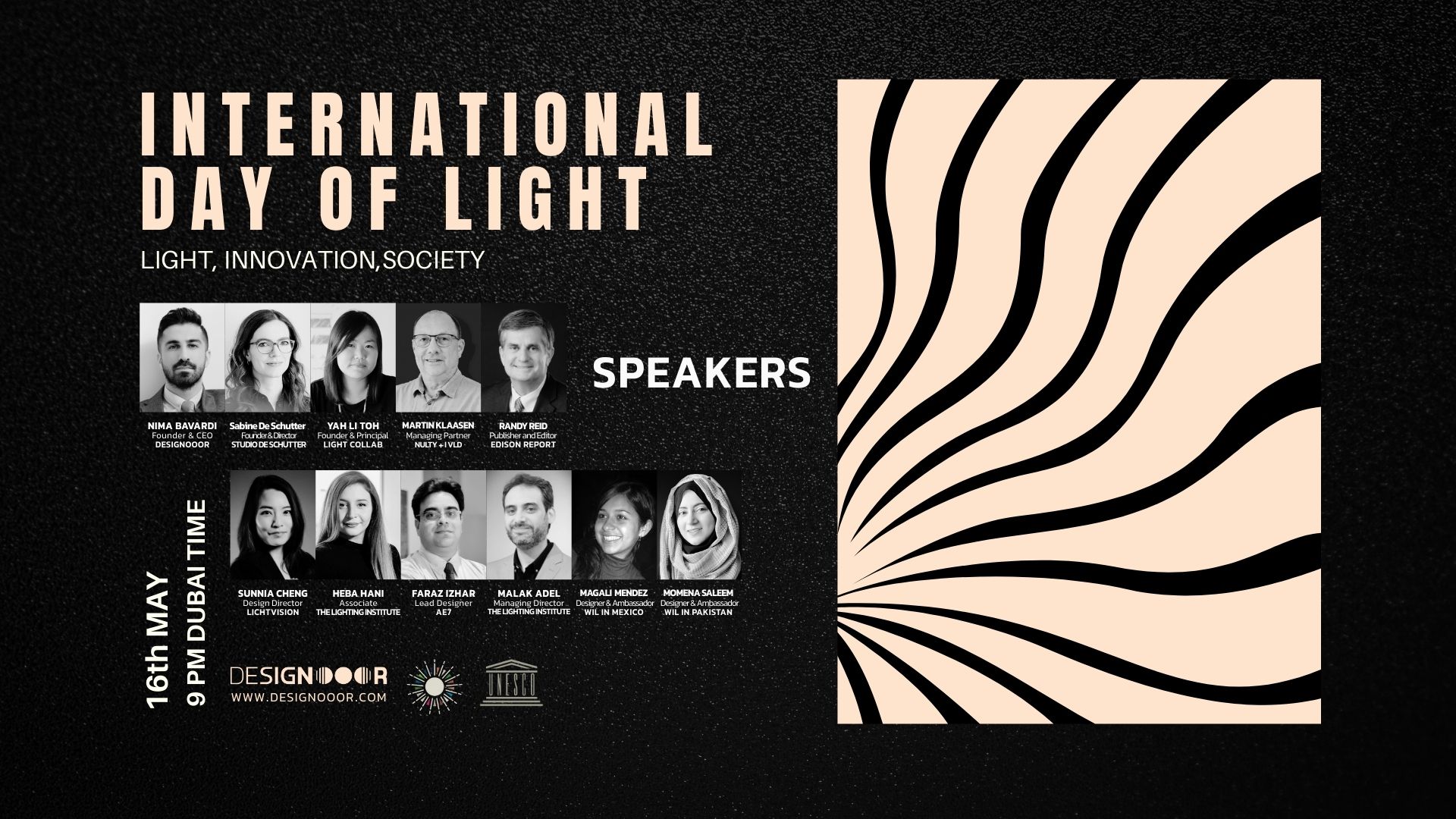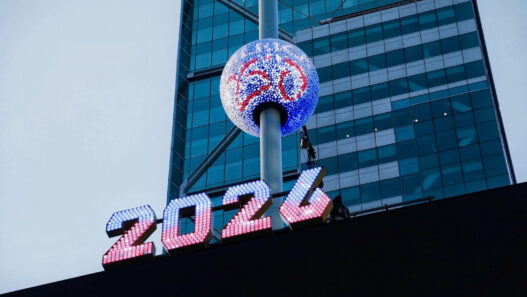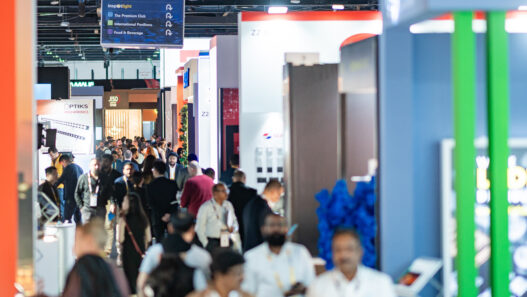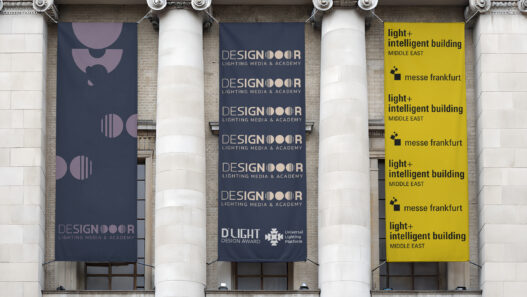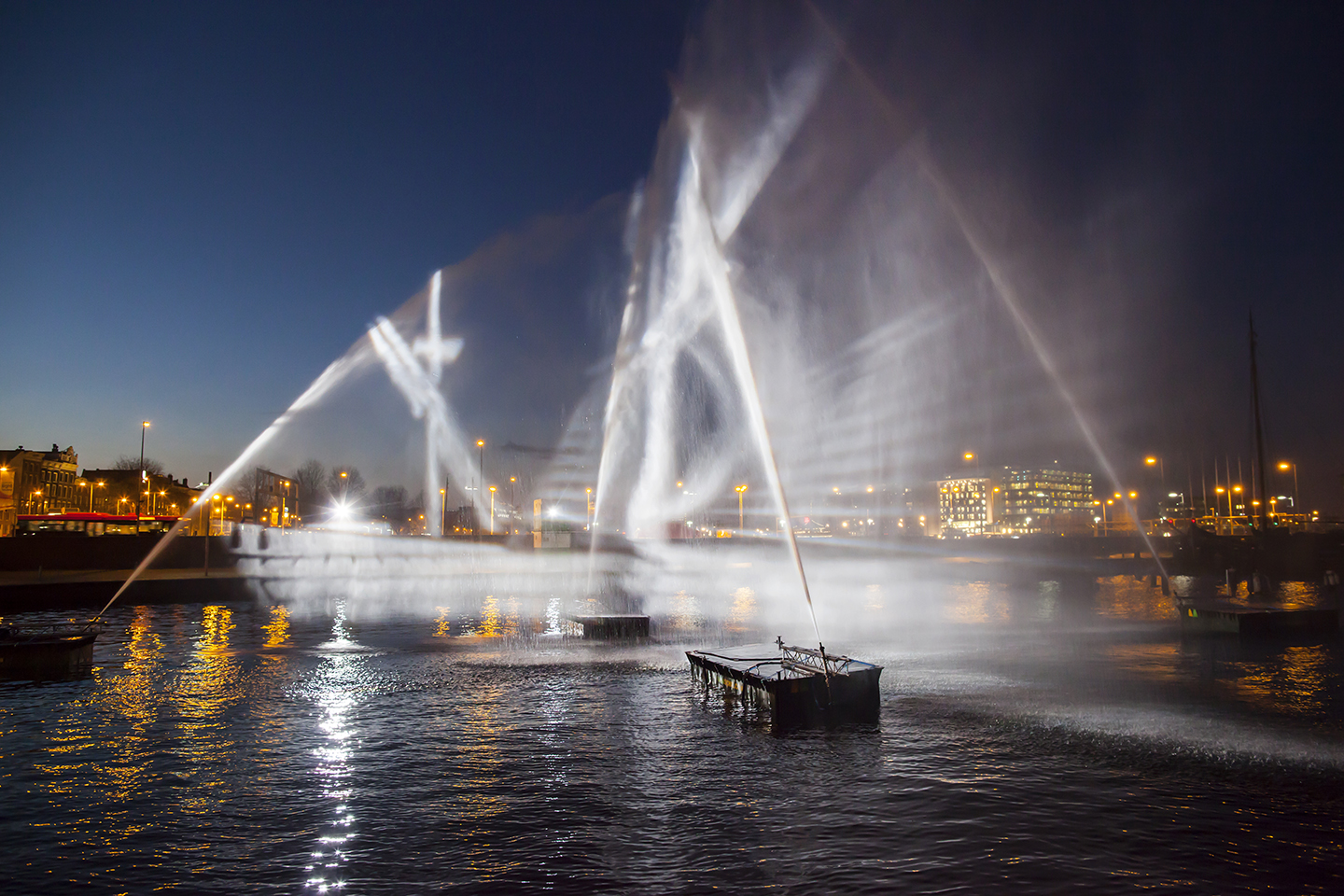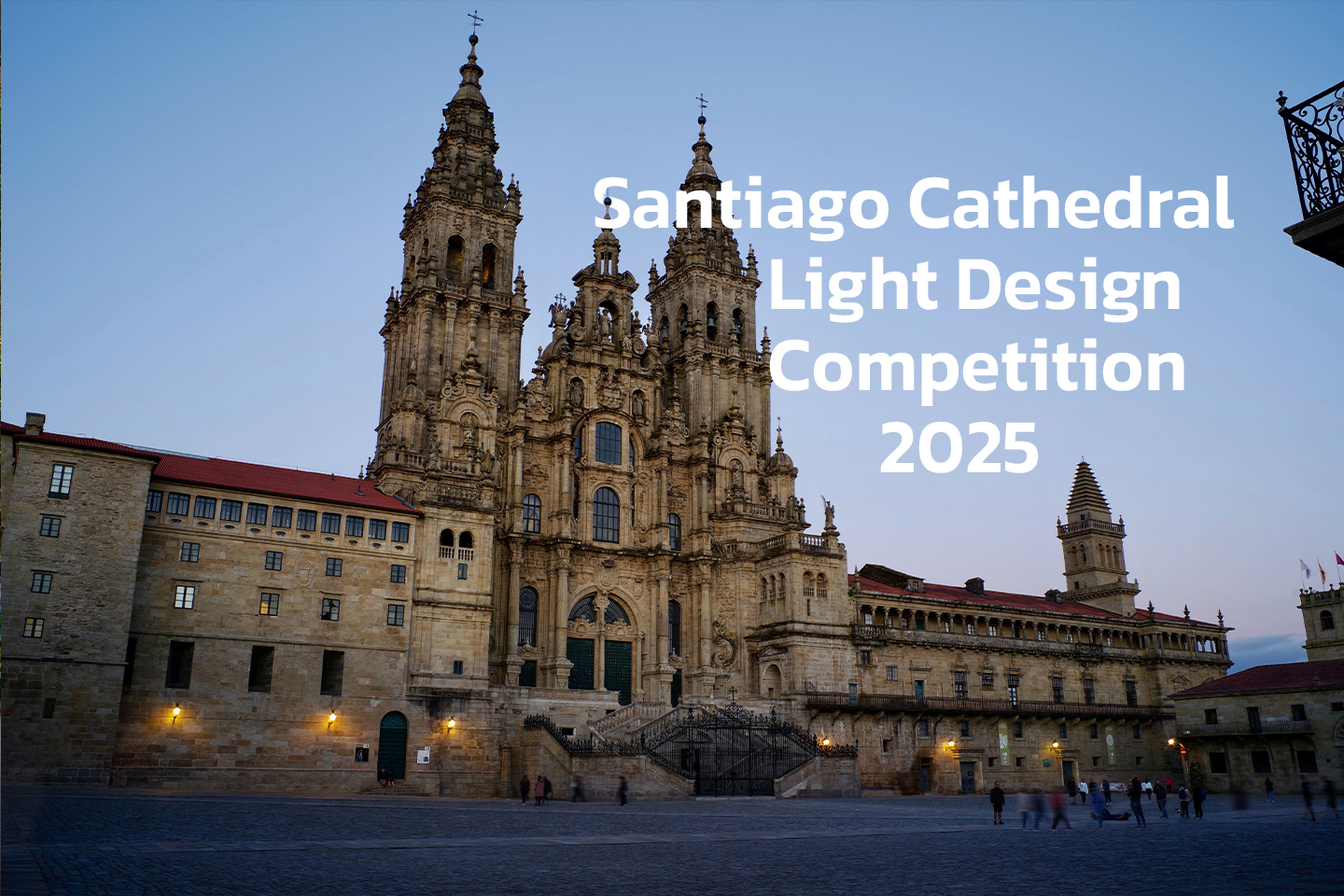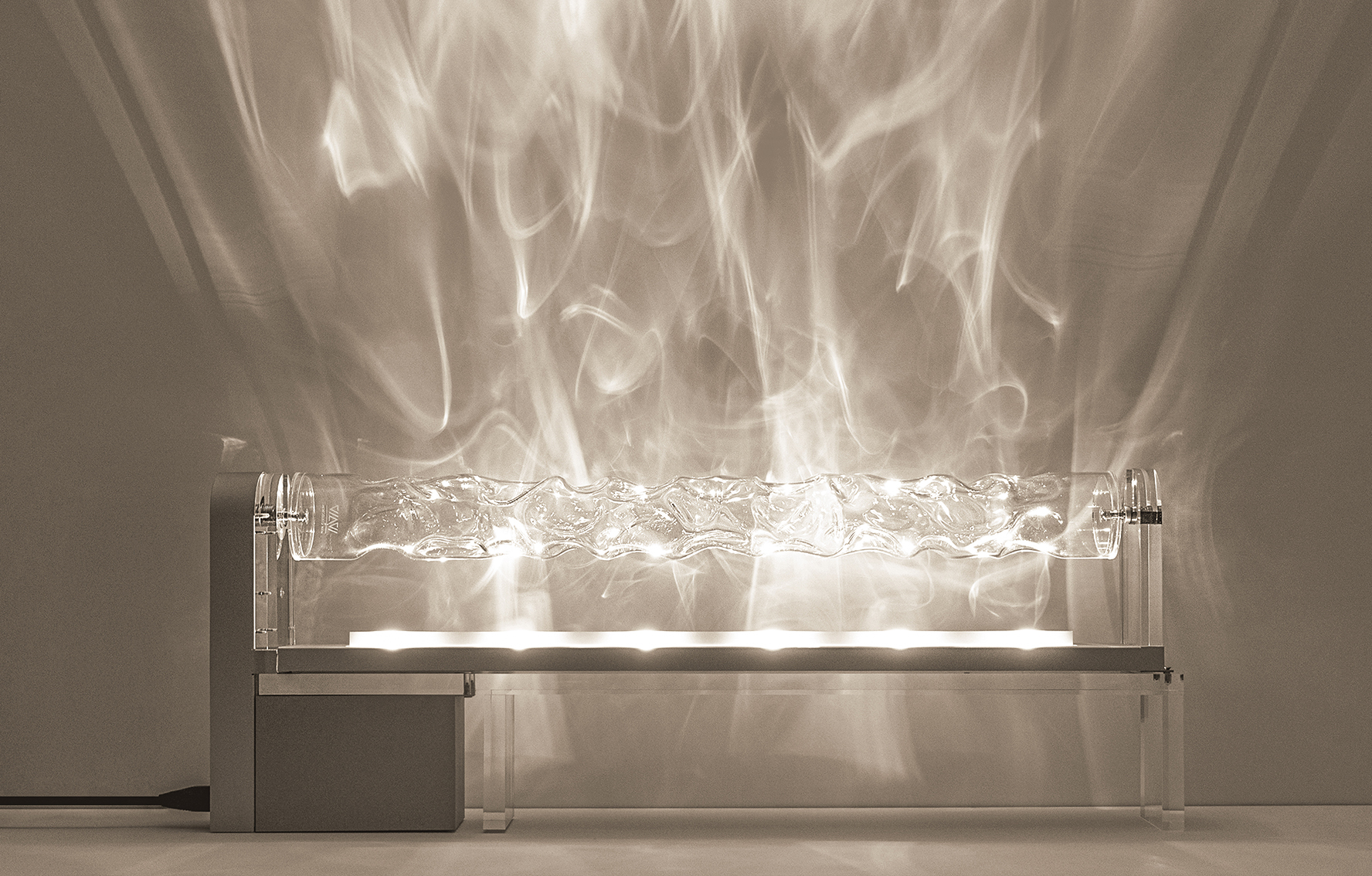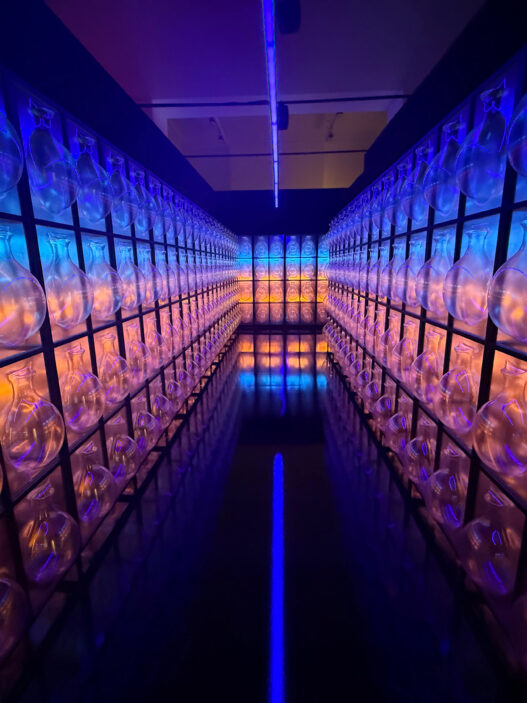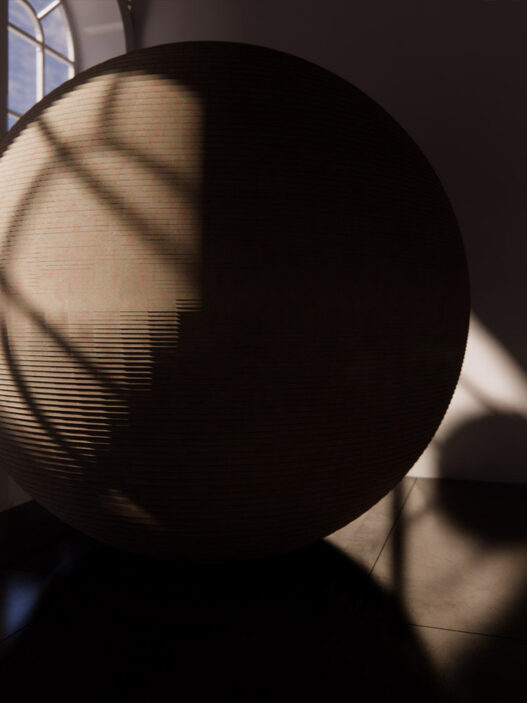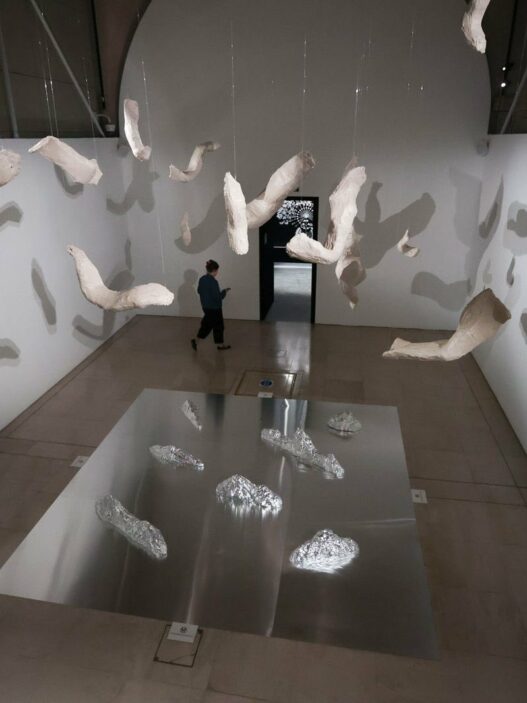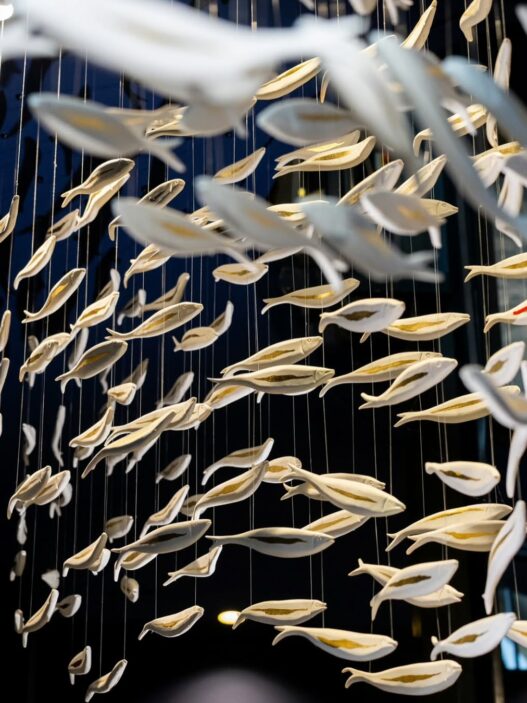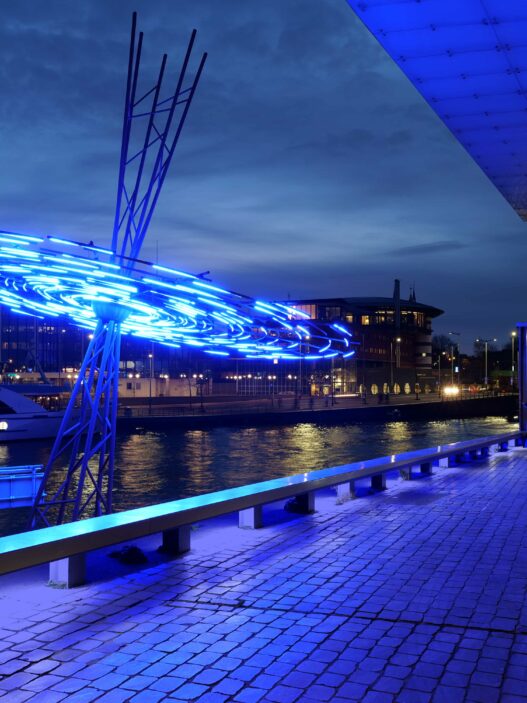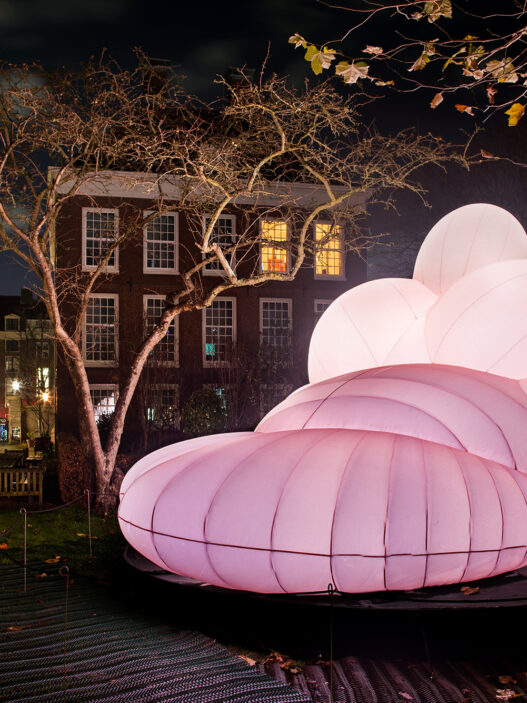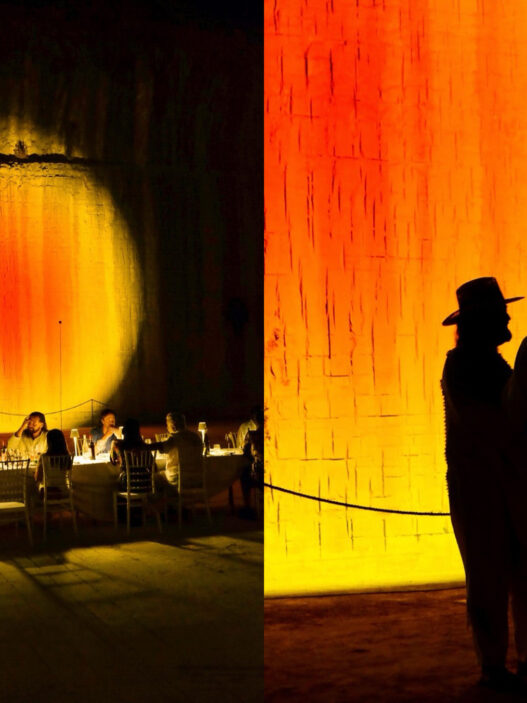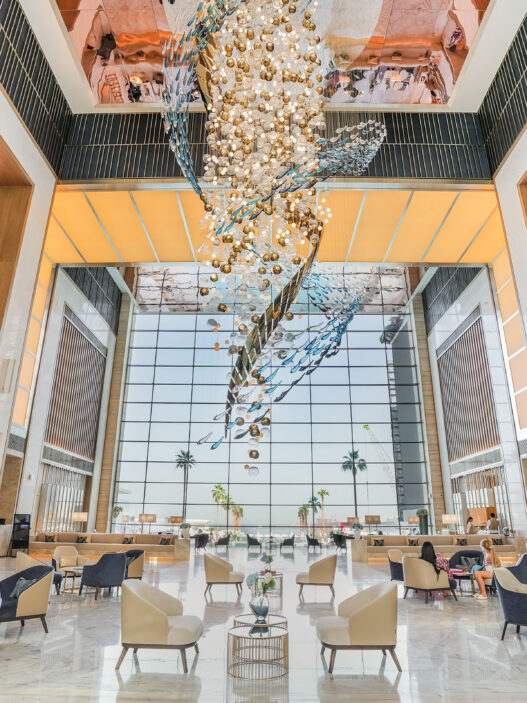A Lost Memory Cradles Twilight
A ghost ship rising in the heart of Amsterdam is no coincidence, it’s a summoning! At first glance, “Ghost Ship” appears as a poetic hallucination, a vessel made of mist, refracted light, and historical longing. But beneath this ephemeral façade lies a rigorously constructed lighting that balances between narrative symbolism and technical discipline. The use of intersecting perpendicular water screens, a technique as deliberate as it is elusive, creates a volumetric illusion that challenges the very definition of surface. What looks like a shimmering illusion is, in fact, a deeply constructed visual narrative: a three-dimensional apparition forged through intersecting planes of vapor, memory, and wind.
The chosen iconography [a Dutch East India Company ship] is not arbitrary. This is The Amsterdam, a name that carries more than weight; it carries scars. That ship’s short-lived voyage toward Batavia, halted by storm and stripped by looters, mirrors the fleeting visibility of this ghostly projection. It appears, it dissolves. It gestures toward control but is governed by natural forces, the wind dictating its clarity, the water suspending its form, the night absorbing its edges. The lighting design itself is a meditation on perception and constructed reality. Rather than illuminating an object, it composes one, not in space, but in the mind of the viewer.
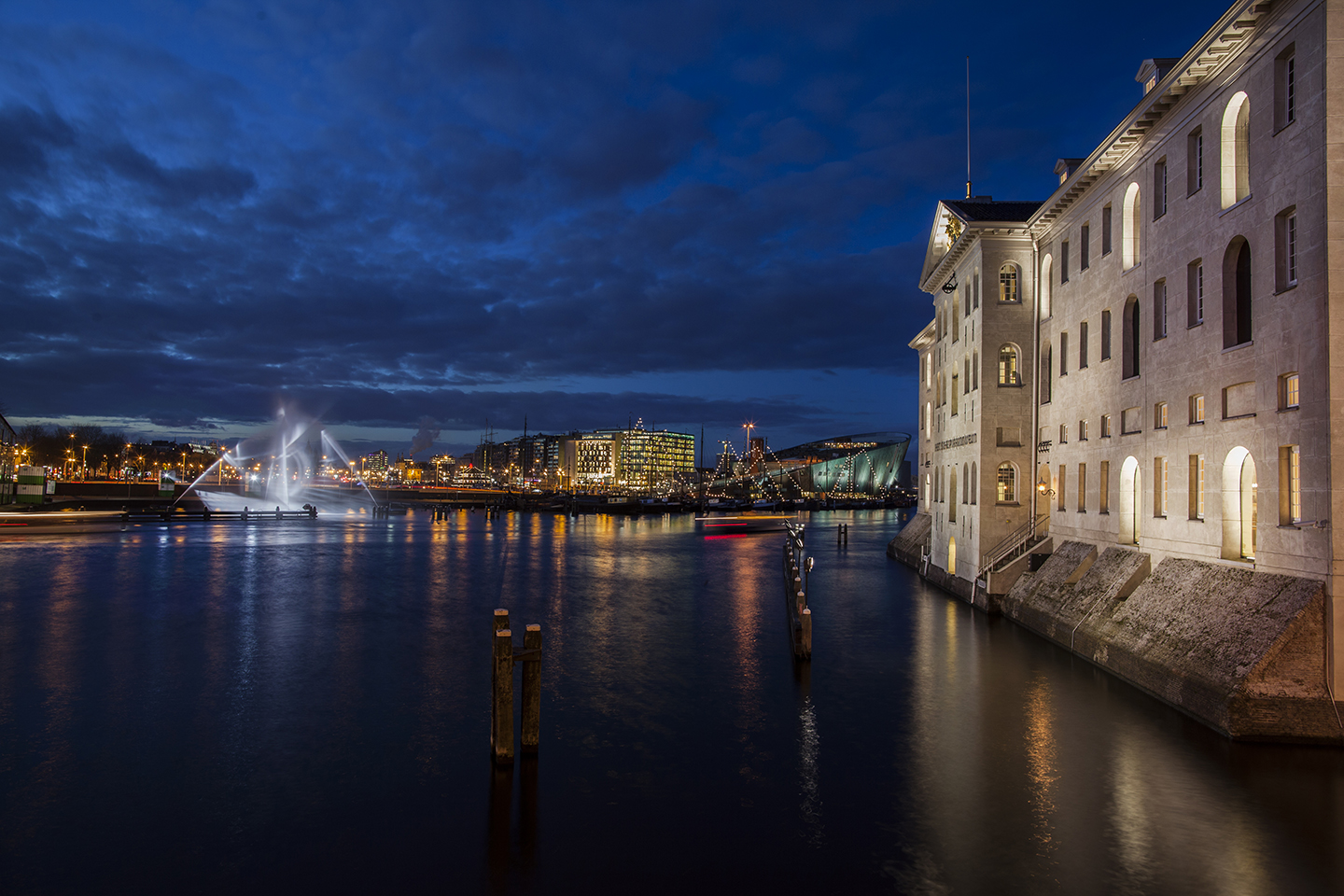
Using two perpendicular water screens to simulate a volumetric object isn’t just a clever hack; it is a direct invocation of Gestalt principles. The illusion of depth emerges through closure, our minds fill in what the light and water deliberately withhold. Figure-ground is constantly in flux: the ship, while central, refuses to assert dominance over its watery stage. At times, the surrounding city lights become part of the form itself, absorbed into its boundaries. Common fate plays out through the movement of particles and wind, when parts of the ship sway or break apart, they do so in unison, heightening the illusion that this form is alive, not rendered. Even the “missing parts” a weakness in other contexts, are harnessed here to amplify the sense of ghostliness. This is not an oversight but an invitation into perceptual ambiguity.
Amsterdam, as a port city, has always negotiated between the visible and the hidden, between arrival and disappearance. Ghost Ship taps into that psychogeographic duality. It doesn’t scream for attention. It waits, half-formed, for the wind to animate it. Its interaction with natural forces isn’t just poetic, it’s deliberate. The designers didn’t fight the environment; they folded it into the very grammar of the work. This is where the installation becomes more than aesthetic, it becomes dramaturgical. The ship, a relic of economic conquest and colonial trajectory.
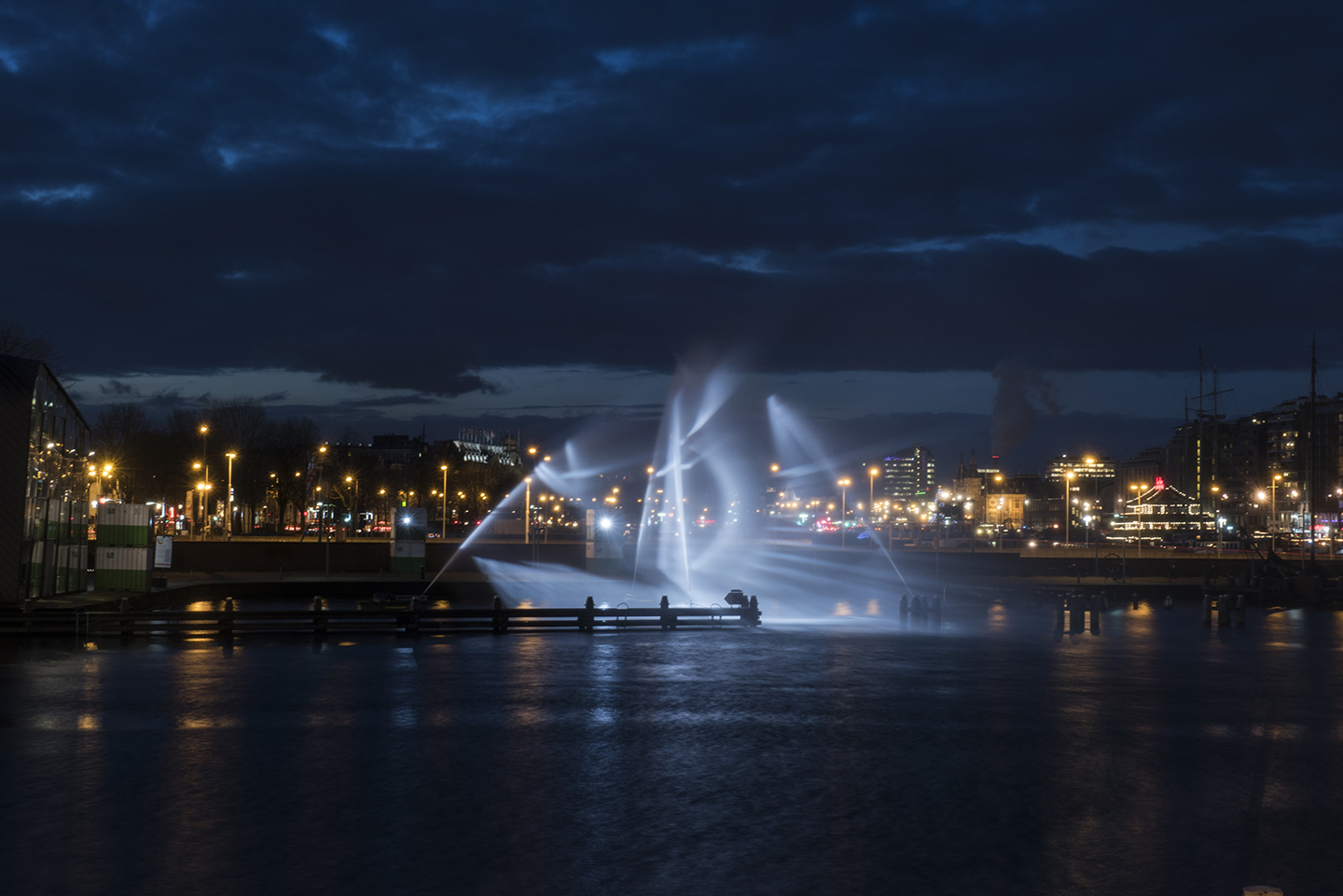
In the end, what stays with the viewer is not the ship itself, but the feeling that something both magnificent and unresolved passed through. And perhaps that’s the truest success of this installation.
Brand : Biangle Studio
Designers : Virgiliu Guraliuc, Alexandra Suciu, Daiana Folea, Mihai Baba
Photo Credits : Janus van den Eijnden
